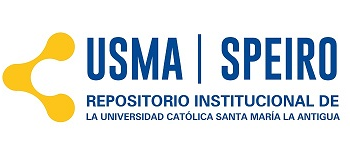La Huella hídrica geográfica en el tránsito del Canal de Panamá, año 2002 al 2017.
DOI:
https://doi.org/10.37387/ipc.v6i3.92Palabras clave:
Huella Hídrica, Canal de Panamá, Agua dulce, Tránsito de buques, FalsacionismoResumen
Para el estudio de la Huella Hídrica Geográfica, se ha utilizado las investigaciones previas de los informes anuales de los años 2002 al 2017, igualmente algunas investigaciones de científicos de la Universidad Tecnológica de Panamá, Instituto Tecnológico de Monterey y otros. La Huella Hídrica como tal, tiene algunos estudios previos y en este caso se utilizó la huella hídrica geográfica (H.H.G) para delimitar que es sobre los barcos que transitan esta ruta interoceánica, el problema consiste en contrastar sí los 52 millones de galones utilizados por cada buque que pasa por el Canal de Panamá, son realmente sustentable en el tiempo según las expectativas actuales. La importancia del estudio, es tener una cifra en base a la suministrada por la propia Autoridad del Canal de Panamá (ACP) sobre la H.H.G. en función del gasto generado del agua dulce utilizada por cada embarcación y obtener otra forma de cotejar su autenticidad fuera de la entidad encargada del canal, esta importancia beneficia a los habitantes del entorno, y a la comunidad en general, tanto nacional como internacional, debido a que el suministro de agua potable depende del propio canal. El estudio se plantea contrastando las diferentes cifras encontradas y para su falsedad o verificación según el método hipotético deductivo, debido en mayor grado a una explicación de lo ya estipulado y comprobado según información de la entidad, es de por sí, la información que suministra en este caso, la propia Autoridad del Canal de Panamá. Al final del estudio, se espera encontrar mediante la falsabilidad, la contundencia o no de los datos suministrado por la propia Autoridad del Canal de Panamá.
Descargas
Publicado
Cómo citar
Número
Sección
Licencia
1. Los autores conservan los derechos patrimoniales (copyright) de las obras publicadas y permiten la reutilización de las mismas.
2. La revista (y sus contenidos) emplean las licencias Creative Commons, específicamente la del tipo CC BY NC SA, en donde: “el beneficiario de la licencia tiene el derecho de copiar, distribuir, exhibir y representar la obra y hacer obras derivadas siempre y cuando reconozca y cite la obra de la forma especificada por el autor o el licenciante”.
3. Se pueden copiar, usar, difundir, transmitir y exponer públicamente, siempre que: i) se cite la autoría y la fuente original de su publicación (revista, editorial y URL, DOI de la obra); ii) no se usen para fines comerciales.
4. Condiciones de auto-archivo. Se anima a los autores a difundir electrónicamente las versiones post-print (versión evaluada y aceptada para su publicación), ya que favorece su circulación y difusión, aumento su citación y alcance entre la comunidad académica.











